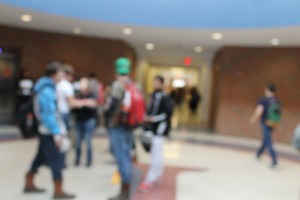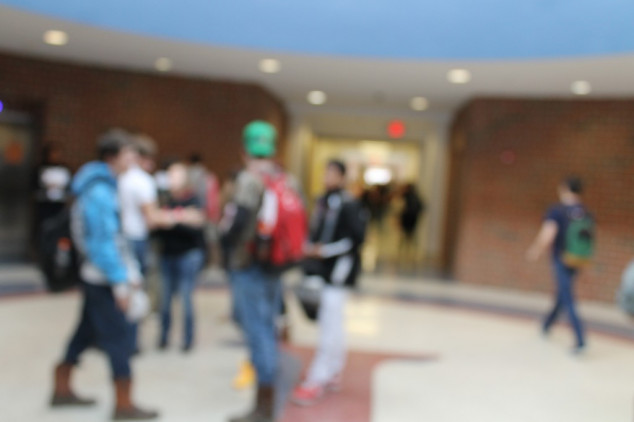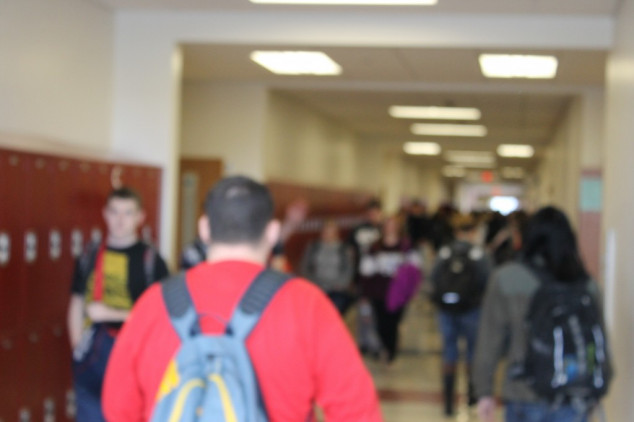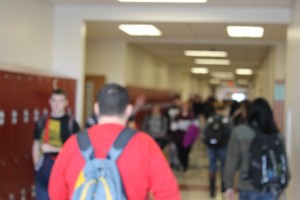THS Considers Random Drug Testing Policy
 The Talawanda School District Board of Education is considering implementing a random drug testing policy for students with certain non-academic privileges, a measure that would be taken to cut student drug abuse within the district.
The Talawanda School District Board of Education is considering implementing a random drug testing policy for students with certain non-academic privileges, a measure that would be taken to cut student drug abuse within the district.
Initially introduced in the 1980’s by public schools around the country, random drug testing has been increasingly sought after by schools concerned about substance abuse. As of 2012, 17% of schools had implemented a random drug testing policy, according to a report by the CDC.
Also according to the CDC, Ohio had the second-highest number of deaths by drug overdose nationwide in 2014, with 2,744 total. Butler County clocked in with 148 deaths per 100,000 residents, making it the Ohio county with the fifth highest drug-related death rate. According to the fall 2013 results of the Pride Survey, a mandatory questionnaire measuring drug and alcohol use, extracurricular involvement, general academic standards, parental control and other habits of lifestyle across the THS student body, 12.5 percent of students reported using illicit drugs twice a month or more. 6.1% of the student body reported using illicit drugs every day.
Policies range in their scope and consequential implications. Though no policy has been written, or even formally proposed yet at Talawanda, Principal Tom York suggested that the policy would most likely be structured similarly to Edgewood High School’s random drug testing policy, which extends to any student involved in extracurricular activities or in possession of a parking pass.
Regarding consequences, York suggested that he would advocate for a non-punitive approach, based perhaps more on intervention and support for those who test positively. “I don’t know that I would advocate for there being a punishment,” he said. “It would not be acceptable to me to completely remove somebody from a sport or an activity.” Policies at other schools vary widely as to their consequences, ranging from interventions, parental notification, and removal from extracurricular activities to more serious punishments, including suspension and expulsion.
This is not the first time that the policy has been suggested; Spivey said this is the third time it’s come up since she took the position of assistant superintendent in 2003. The possibility re-emerged most recently in the winter of 2013-2014, when York and then-athletic director John Thomas were asked to present the idea to the board – not as a formal proposal, simply to give information.
So, why the renewed interest? The accumulation of recent data, including a detailed analysis of the aforementioned Pride data, which measured drug use against other variables, including extracurricular participation. Generally, involvement in community activities, churches, and school clubs served as a protective factor, meaning the more actively students participated in them, the less likely they were to use illicit drugs. However, the same was not found of athletic activities. 23.1% of students who reported never participating in sports also reported illicitly using drugs, versus 27.3% of the students who seldom participated, 20.9% of those who sometimes participated, 24.4% of those who participated often, and 23% of those who participated a lot. In other words, athletic activities did not serve as a deterrent to drug use, leading many to conclude that it would not be unreasonable to implement an extracurricular-specific policy.
In September of 2014, the district’s Health Coordinating Council (HCC), composed of health professionals, staff, and community members, committed to discussing it. Their meetings during October and November of 2014 and February of 2015 were solely dedicated to the topic, and on February 23rd, they presented their findings to the board with the addendum that the HCC had been split as to whether the policy should be implemented. The board raised a number of concerns, according to the meeting minutes posted on the district website, specifically regarding the effectiveness, the scope and the consequences of positive test results. They concluded that they needed more information.
Since then, the high school has reached out to the community for opinions and concerns. In January of this year, the school distributed a survey to the community regarding their stances on the policy. Of the 349 responses, 60% were opposed, 34% were in favor, and 6% were not sure. THS staff were also surveyed, and held the opposite stance: of the 74 responses, 72% were in favor, and 28% were opposed.
On Tuesday, January 12, the high school hosted a community forum on the subject, and both sides had the opportunity to weigh in and ask questions. Those in favor pointed out that drug testing is a reality in many jobs. Skeptics pointed out the lack of conclusive evidence as to the policy’s effectiveness, and argued that such matters should be left up to the parents. School administrators hold many of the same concerns: Macechko, Spivey, and York alike expressed caution, each arguing the need for a widespread action plan to prevent drug use – a plan that may or may not include drug testing. “I’m not going to make this proposal, because I don’t see it being effective unless somebody – and this is not going to happen overnight – comes up with a comprehensive plan to educate us and help us,” said York. Spivey echoed his concerns, adding that it was essential to look at the “bigger, grassroots issue” behind student drug use, and more completely examine how the school could play a hand in preventing it. She suggested that evaluation of health education and a focus on building relationships in school and at home could play an important role in that movement.
So, what’s next for the possible policy-to-be? Spivey presented the community survey results and a report of the community forum at the district board meeting on Monday, February 8. No decision was made, and Spivey said she will continue to work with Macechko, the HCC, and the larger community to more thoroughly discuss the issue of student drug abuse and possible solutions.
Issues of Legality
Random student drug testing has been legally contested numerous times on the grounds that it violates the 4th amendment of the U.S. Constitution, which protects against unreasonable searches and seizures. There are two relevant Supreme Court cases regarding the topic. the first is Vernonia School District v. Acton, a 1995 decision that upheld the legality of a random student drug testing policy that extended to athletes. It is certainly unconstitutional to randomly test all students, the case held, but student athletes sacrifice their privacy and submit themselves to a high degree of regulation simply by signing up for the sport at hand, and therefore it is not unreasonable to randomly test them.
The second relevant case is 2001’s Board of Education of Independent School District of Pottawatomie County, et al. v. Earls, et. al. This case upheld the legality of a random drug testing policy in Tecumseh School District in Tecumseh, Oklahoma, that targeted students in extracurricular activities as well as athletic programs. Accordingly, this legal precedent is used to legitimate the constitutionality of policies that include students with extracurricular privileges.
However, the Tecumseh School District was not randomly testing students in all extracurricular programs. The case reads as follows: “In practice, the Policy has been applied only to competitive extracurricular activities sanctioned by the Oklahoma Secondary Schools Activities Association (OSSAA).” The majority opinion said the following in defense of the policy: “Students who participate in competitive extracurricular activities voluntarily subject themselves to many of the same intrusions on their privacy as do athletes. Some of these clubs and activities require occasional off-campus travel and communal undress, and all of them have their own rules and requirements that do not apply to the student body as a whole.” Thus, competitive extracurricular activities were deemed similar to athletics in terms of the privacy sacrificed by participants, and the majority ruled accordingly that they should be subject to the same random tests as athletes. Noncompetitive extracurricular activities were not addressed, as the policy was not targeting them.
Yet as far as this reporter’s research goes, schools with random drug testing policies do not seem to be making the distinction between competitiveness and non-competitiveness. York confirmed that “the schools that are actually doing drug testing are doing it with anybody who does anything outside of the basic academic program.” Edgewood is one of those schools – their student handbook and board policy alike mandate that the testing target anyone with any extracurricular involvement, events and driving privileges. York and a secretary at Edgewood High School both confirmed that Edgewood does not distinguish between competitive and noncompetitive extracurricular activities.
When asked hypothetically whether that would be the case at THS, York was not able to say conclusively, but suggested that a random drug testing policy would follow Edgewood’s model. “I wouldn’t see that if there would be a policy here ever that it would not include drivers, that it would not include all people who are in extracurriculars. It would be anyone who does anything outside of their basic right to go to class,” he said. Still, he was cautious of the legal implications of an overly broad policy, and commented on the issue of competitiveness in extracurricular activities. “I have not seen that challenged, but it probably would…we need to be mindful of what the guidelines are legally,” said York.
Mark Weiker is an attorney at Albeit Weiker, LLP, a law firm based in Columbus, Ohio. Weiker specializes in school law from kindergarten through college. When asked about the constitutionality of policies like Edgewood’s, he noted that the hairline fracture that distinguishes (or fails to distinguish) between non-competitive and competitive activities was not commented upon in the “cryptic” majority opinion of the Pottawatomie case, concluding that “at least for now, it appears that requiring random, suspicionless drug testing to participants in [arguably] non-competitive, non-athletic extracurricular activities will stand.”
So, the jury is still out with regards to constitutionality. But Weiker ventured beyond the bounds of the ambiguities of the law to say that “a blanket policy applied to extracurriculars is not always the best solution…Just because the law says that a school can do something does not always mean that a school should do something.”








Sylvia de Boer reports on possible random drug testing policy at THS and issues of constitutionality. https://t.co/9uamR80oZY